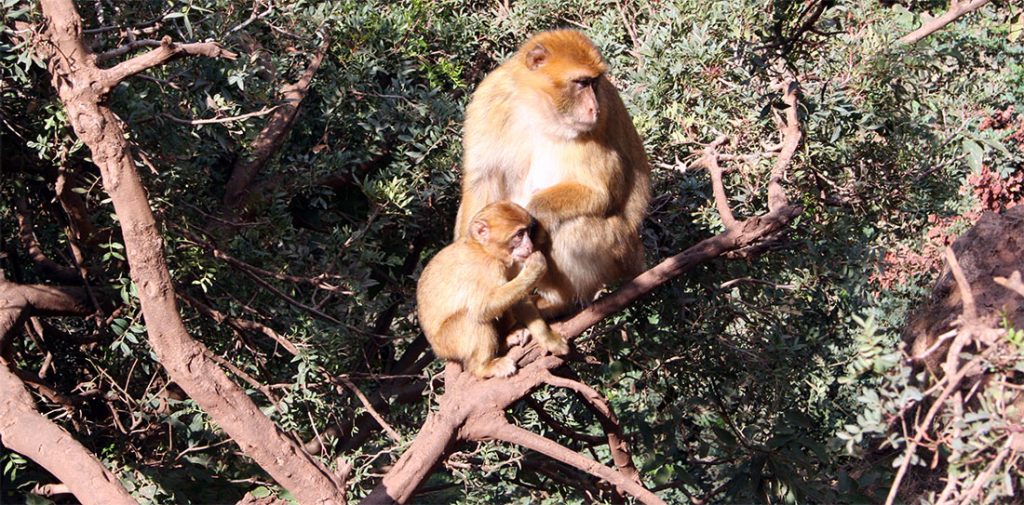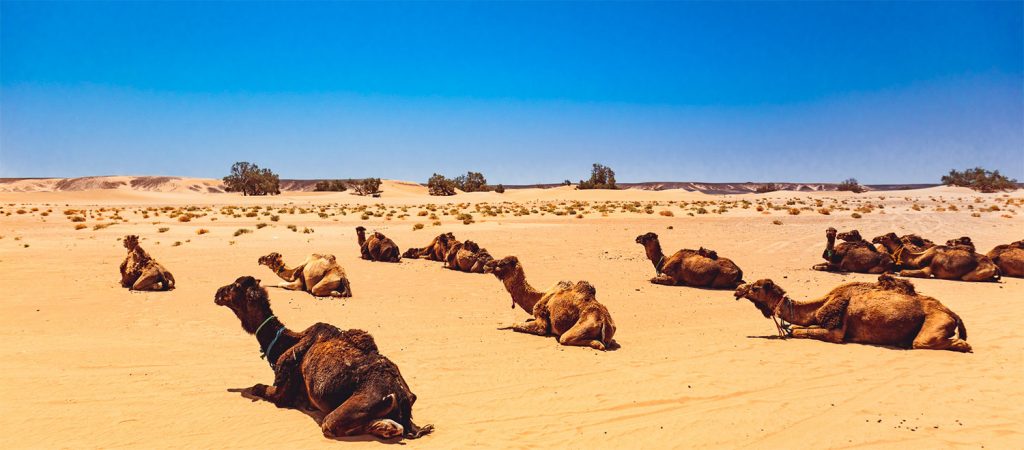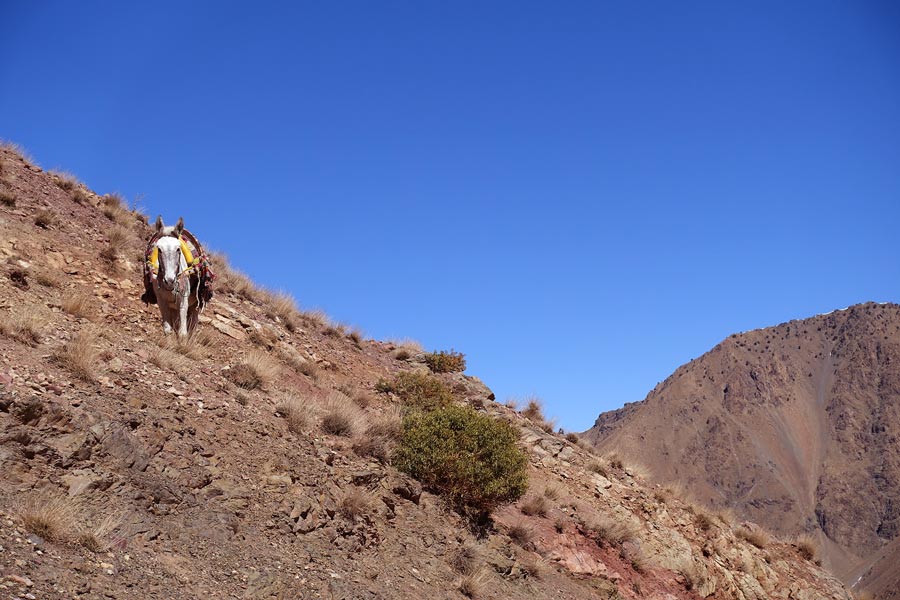Morocco is a country of diverse wildlife, both on land and along its coastal waters. Its fauna reflects the variety and extremes of the country’s landscapes. This article will tell you which animals live in Morocco, where to find them, and which ones you should be careful of.
Contents
Wild animals in Morocco
Morocco is home to around 675 known animal species, about 4.3% of which are endemic, meaning they are found nowhere else in the world. A similar percentage is classified as endangered.
Barbary macaques
The Atlas Mountains are one of the country’s most important habitats, where you’ll find the endemic Barbary macaque (Macaca sylvanus), especially in the famous cedar forests near Ifrane and Azrou. Though they are accustomed to people, it is best to keep your distance and never feed them, as doing so can alter their natural behavior.
Barbary macaques are a subspecies of macaques and the only primates native to North Africa that live in large groups. The International Union for Conservation of Nature (IUCN) lists them as endangered, and approximately 70% of the remaining global population lives in Morocco.

Other wild animals in Morocco
Majestic birds of prey, such as the Bonelli’s eagle and the Egyptian vulture, glide on thermal currents as they hunt in the skies above. In more remote areas, you might encounter mammals such as aoudads (Barbary sheep) or wild boars with a bit of luck. Big cats, such as servals and caracals (also known as desert lynxes), are especially threatened, with their numbers in steep decline due to habitat loss and hunting. Various gazelle species, such as Cuvier’s and Dorcas gazelles, are also becoming increasingly rare in Morocco’s dune landscapes.
In desert regions, especially the vast Sahara, you’ll find animals that are perfectly adapted to harsh conditions. Dromedaries are ever-present and essential to traditional desert life and camel trekking tours.

One of the desert’s most charming creatures is the fennec fox with its oversized ears, which help regulate body temperature. These shy, nocturnal animals are difficult to spot and are often only seen at dawn or dusk. Smaller rodents, such as jerboas, are also common but rarely visible.
Domestic and stray animals in Morocco
Domestic animals such as donkeys, mules, and camels continue to play vital roles in everyday life, particularly in rural areas and the tourism sector. They have long been used as pack animals and for transportation; camel rides across the Sahara remain a popular tourist activity.

As in many countries, cats and dogs are everywhere in Morocco. However, their role is often different from that of a cuddly pet. In rural areas, free-roaming dogs typically serve as guard or herding animals. For travelers, especially cyclists venturing off the beaten path, these dogs can be a nuisance, barking and chasing after them. Nevertheless, their behavior is closely tied to traditional rural life.
Potentially dangerous animals in Morocco
Although encounters with dangerous wildlife are rare for travelers in Morocco, some species do warrant caution. Venomous snakes inhabit various parts of the country. These include the well-camouflaged horned viper, which is especially prevalent in desert and semi-desert regions, as well as the less common Egyptian cobra. Both species are shy and tend to avoid humans.
To reduce risk, wear sturdy, ankle-high footwear and long pants, especially when walking off paved paths in rocky terrain or through tall grass. If you’re staying in rural areas, shake out your shoes before putting them on, as snakes or scorpions might have crawled inside.
Scorpions also pose a potential danger, particularly in dry, remote areas at night, because they are nocturnal. They hide under rocks, wood, or in crevices during the day. Carrying a flashlight after dark and avoiding walking barefoot outdoors are smart precautions.
Despite online myths to the contrary, there have been no wild crocodiles in Morocco for decades due to dried-up habitats and heavy hunting. In wetlands, you might occasionally spot otters, though they are extremely shy and only pose a threat if cornered.
If you’d like to see exotic creatures up close in a safe setting, Crocoparc in Agadir is a great option. Open daily from 10 a.m. to 6 p.m., the park is home to hundreds of crocodiles and their young, as well as turtles, green iguanas, and snakes, all of which live in well-maintained enclosures.
Animal welfare and public perception
The concept of animal rights, as discussed in many Western countries, is still evolving in Morocco. Traditionally, animals are often seen primarily as working companions or part of everyday urban and rural life. While their welfare is usually ensured by customary care, it is not yet widely shaped by modern ethical considerations.

This traditional perspective is reflected in Moroccan cuisine, which is deeply rooted in meat-based dishes. Although vegetarianism and veganism are slowly gaining popularity in urban centers, finding suitable meals outside of big cities can still be challenging.
Check out our detailed tips for vegetarians and vegans traveling in Morocco.
Conservation efforts and future outlook
Given the growing threats to Morocco’s wildlife, conservation efforts have become increasingly important. Programs that restore habitats and protect species are essential to safeguarding the country’s biodiversity. National parks such as Souss-Massa near Agadir provide a critical refuge for many native animals.

One of the biggest challenges is sand mining, which destroys habitats and ecosystems. Stronger protective measures and growing environmental awareness are essential to preserving Morocco’s rich biodiversity.
Morocco’s wildlife is a precious heritage that deserves protection. Although the country faces significant conservation challenges, there are encouraging signs of growing awareness and a shift toward more sustainable practices. The future of Morocco’s fauna depends on its ability to safeguard unique ecosystems while balancing development and nature conservation.
